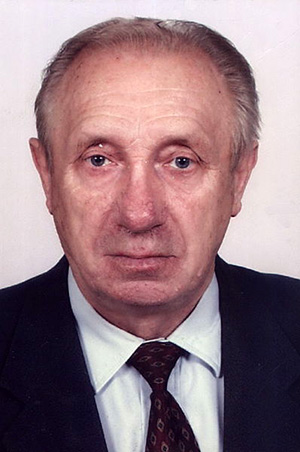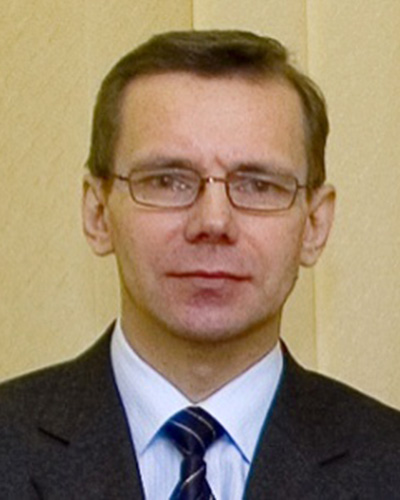|
  UDC 332.2:711.14; JEL Q15, R14
UDC 332.2:711.14; JEL Q15, R14
Kazmir, P., & Kazmir, L. (2019). Klyuchovi napryamy ta metodychni osoblyvosti suchasnykh doslidzhen' zmin u zemlekorystuvanni [Key directions and methodological features of modern studies of land use changes]. In Sotsial'no-ekonomichni problemy suchasnoho periodu Ukrayiny [Socio-Economic Problems of the Modern Period of Ukraine]: Vol. 138 (4) (pp. 62-68). DOI: https://doi.org/10.36818/2071-4653-2019-4-10. [in Ukrainian].
Sources: 29
Authors
Kazmir Pavlo HnatovychPh.D. of Economics, Professor
Professor of the Department of geodesy and land management of the Sumy National Agrarian University
Webpages:   

Kazmir Lyubomyr PavlovychPh.D. of Economics
Researcher of the Department of problems of the real sector of regions' economy of the Dolishniy Institute of Regional Research of NAS of Ukraine
Contacts:  box5@ukr.net box5@ukr.net
Webpages:       
ResumeInterest in land-use changes (LUC) research has been growing rapidly in recent years. This topic has already become the subject of a separate scientific discipline – land use science (or land change science). In order to formulate relevant future policy and develop appropriate land-use management tools, it is crucial to know how the LUC шьзфсе the environment and society condition. For Ukraine, where the structure of land use and the system of land resources management have significantly changed during the years of post-socialist transformation of land relations, the study of the LUC on a modern methodological basis is especially actual. The paper, based on a critical analysis of publications in leading international journals over the last thirty years, identifies key directions of LUC studies and analyzes their methodological features. There is a significant increase of the number of works based on the results of meta-studies and the use of a wide range of methods for modeling the LUC processes, their causes and possible consequences. The great "synergistic potential" of integration of the selected directions is noted, which makes it possible to accelerate the development of the general theory of land use and increase its use efficiency in substantiation of management decisions in the sphere of land use and modernization of the mechanisms of state land, spatial and ecological policies with consideration of existing and potential globalizing challenges. In this context, the key role of the land use integrated planning methodology at regional and local levels is emphasized. This methodology would require close cooperation between government, business and the public in developing a common vision for the implementation of specific land use plans and projects based on the principles of subsidiarity, participativity and shared responsibility.
Keywords:land-use changes, socio-natural approach, cause and effect relations, meta-studies, modeling, land policy
References- Kazmir, L. P. (2014). Orhanizatsiyno-terytorial’ni determinanty sustensyvnoho rozvytku sil’s’koho hospodarstva [Organizational and territorial determinants of sustainable agricultural development]. In Sotsial’no-ekonomichni problemy suchasnoho periodu Ukrayiny [Socio-Economic Problems of the Modern Period of Ukraine]: Vol. 110 (6). (pp. 49-59). [in Ukrainian].
- Kazmir, L. P. (2015). Orhanizatsiyno-ekonomichni zasady ekolohichno zbalansovanoho sil’s’kohospodars’koho zemlekorystuvannya [Organizational and economic principles of ecologically balanced agricultural land use]. The thesis for the Degree of Ph.D. in Economics. Kyiv. [in Ukrainian].
- Danylyshyn, B. M., Dorohuntsov, S. I., & Mishchenko, V. S., et al. (1999). Pryrodno-resursnyy potentsial staloho rozvytku Ukrayiny Natural resource’s potential of sustainable development of Ukraine. Kyiv. [in Ukrainian].
- Bohira, M. S. (Ed.), Kazmir, P. H., & Kolodiy, P. P. (2011). Transformatsiya zemel’noho ustroyu v Ukrayini: problemy teoriyi i praktyky [Transformation of the land system in Ukraine: problems of theory and practice] / Lviv: Lviv NAU. [in Ukrainian].
- Magliocca, N. R., Rudel, T. K., Verburg, P. H., & McConnell, W. J., et al. (2015). Synthesis in land change science: methodological patterns, challenges, and guidelines. Regional environmental change, 15 (2), 211-226. DOI https://doi.org/10.1007/s10113-014-0626-8.
- Verburg, P. H., Mertz, O., Erb, K.-H., Haberl, H., & Wu, W. (2013). Land system change and food security: Towards multi-scale land system solutions. Current opinion in environmental sustainability, 5, 494-502. DOI https://doi.org/10.1016/j.cosust.2013.07.003.
- Turner, B. L., Lambin, E. F., Reenberg, A. (2007). The emergence of land change science for global environmental change and sustainability. Proceedings of the National Academy of Sciences of the United States of America 104, 20666-20671. DOI https://doi.org/10.1073/pnas.0704119104.
- Rindfuss, R. R., Entwisle B., Walsh, S. J., & An, L., et al. (2008). Land use change: complexity and comparisons. J. Land Use Sci. 3, 1-10.
- Roth M., Nobis R., Stetsiuk V., Kruhlov I. (Eds.) (2008). Transformation Processes in the Western Ukraine: Concepts for a Sustainable Land Use. Berlin: Weißensee Verlag. 602 p.
- Stuczyński, T., & Kaźmir, L. (2010). Analiza zmian użytkowania ziemi w wybranych regionach przygranicznych Polski i Ukrainy w kontekście ochrony gleb [Analysis of land use changes in selected border regions of Poland and Ukraine in the context of soil protection]. In Mekhanizmy upravlinnya zemel'nymy resursamy v umovakh rynkovoyi ekonomiky [Mechanisms of land resources management in a market economy] (pp. 25-27). Kharkiv. [in Polish].
- Baumann, M., Kuemmerle, T., Elbakidze, M., & Ozdogan, M., et al. (2011). Patterns and drivers of post-socialist farmland abandonment in Western Ukraine. Land use policy, 28(3), 552-562. DOI https://doi.org/10.1016/j.landusepol.2010.11.003.
- Ermoliev, Y. M., Ermolieva, T. Y., Havlik, P., & Mosnier, A., et al. (2017). Robust downscaling approaches to disaggregation of data and projections under uncertainties: Case of land cover and land use change systems. Cybernetics and Systems Analysis, 53(1), 26-33. DOI: https://doi.org/10.1007/s10559-017-9904-z.
- Lambin, E. F., & Meyfroidt, P. (2011). Global land use change, economic globalization,and the looming scarcity. Proceedings of the National Academy of Sciences of U. S. A., 108 (9), 3465-3472. DOI https://doi.org/10.1073/pnas.1100480108.
- Rounsevell, M. D. A., Pedroli, B., Erb, K.-H., & Gramberger, M., et al. (2012). Challenges for land system science. Land Use Policy, 29, 899-910 DOI https://doi.org/10.1016/j.landusepol.2012.01.007.
- Magliocca, N. R., Van Vliet, J., Brown, C., & Evans, T. P., et al. (2015). From meta-studies to modeling: Using synthesis knowledge to build broadly applicable process-based land change models. Environmental Modelling & Software, 72, 10-20. DOI https://doi.org/10.1016/j.envsoft.2015.06.009.
- Adams, M. (2015). Land: A New Paradigm for a Thriving World. Berkeley CA, North Atlantic Books.
- Halchynskyy, A. S. (2001). Superechnosti reform: u konteksti tsyvilizatsiynoho protsesu [Contradictions of reforms: in the context of the civilization process]. Kyiv. [in Ukrainian].
- Sonko, S. P. (2003). Prostorovyy rozvytok sotsio-pryrodnykh system: shlyakh do novoyi paradyhmy [Spatial development of socio-natural systems: the way to a new paradigm]. Kyiv. [in Ukrainian].
- Verburg, P. H. (2006). Simulating feedbacks in land use and land cover change models. Landscape Ecology, 21, 1171-1183. DOI https://doi.org/10.1007/s10980-006-0029-4.
- Zborowski, A. (2005). Przemiany struktury społeczno-przestrzennej regionu miejskiego w okresie realnego socjalizmu i transformacji ustrojowej (na przykładzie Krakowa). [Changes in the socio-spatial structure of the urban region during the period of real socialism and political transformation (on the example of Krakow)]. Krakow. [in Polish].
- Glass, G. V. (1976). Primary, secondary, and meta-analysis of research. The Educational Researcher, 10, 3-8.
- Green B. F., Hall J. A. (1984). Quantitative methods for literature reviews. Annual Review of Psychology, 35, 37-53.
- Réchauchère O., Akkari M. E., Le Perchec S., Makowski D., et al. (2018). An innovative methodological framework for analyzing existing scientific research on land-use change and associated environmental impacts. In Sustainable Agriculture Reviews. 30, 1-13. Springer, Cham. DOI https://doi.org/10.1007/978-3-319-96289-4_1.
- Van Vliet, J., Magliocca, N. R., Büchner, B., & Cook E., et al. (2016). Meta-studies in land use science: Current coverage and prospects. Ambio, 45(1), 15-28.
- Valbuena, D., Verburg, P. H., Bregt, A. K., & Ligtenberg, A. (2010). An agent-based approach to model land-use change at a regional scale. Landscape ecology, 25(2), 185-199. DOI https://doi.org/10.1007/s10980-009-9380-6.
- Murray-Rust, D., Brown, C., Van Vliet, J., Alam, S. J., & Robinson, D. T., et al. (2014). Combining agent functional types, capitals and services to model land use dynamics. Environ. Model. Softw. 59, 187-201. DOI https://doi.org/10.1016/j.envsoft.2014.05.019.
- Sohl, T. L., & Claggett, P. R. (2013). Clarity versus complexity: Land-use modeling as a practical tool for decision-makers. Journal of Environmental Management, 129, 235-243. DOI https://doi.org/10.1016/j.jenvman.2013.07.027.
- Van Delden, H., Stuczynski, T., Ciaian, P., & Luisa, M., et al. (2010). Integrated assessment of agricultural policies with dynamic land use change modelling. Ecological Modelling, 221, 2153-2166. DOI https://doi.org/10.1016/j.ecolmodel.2010.03.023.
- Van Delden, H., Seppelt, R., White, R., & Jakeman, A. J. (2011). A methodology for the design and development of integrated models for policy support. Environ. Model. Softw. 26 (3), 266-279. DOI https://doi.org/10.1016/j.envsoft.2010.03.021.
|